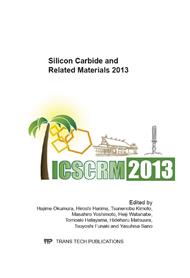p.1030
p.1034
p.1038
p.1042
p.1046
p.1050
p.1054
p.1058
p.1063
Nuclear Radiation Detectors Based on 4H-SiC p+-n Junction
Abstract:
Silicon carbide (SiC) radiation detectors were realized by 10B implantation into the metal contact in order to avoid implantation-related defects within the sensitive area of the 4H-SiC pn junction. No post implantation annealing was performed. Such detectors respond to thermal neutrons showing consistent counting rates as function of external reverse bias voltages and radiation intensity.
Info:
Periodical:
Pages:
1046-1049
Citation:
Online since:
February 2014
Price:
Сopyright:
© 2014 Trans Tech Publications Ltd. All Rights Reserved
Share:
Citation:


